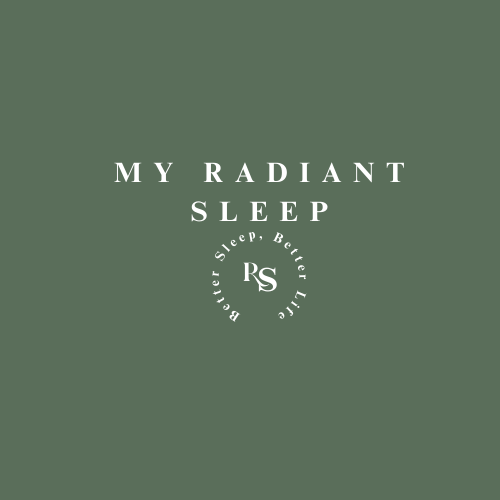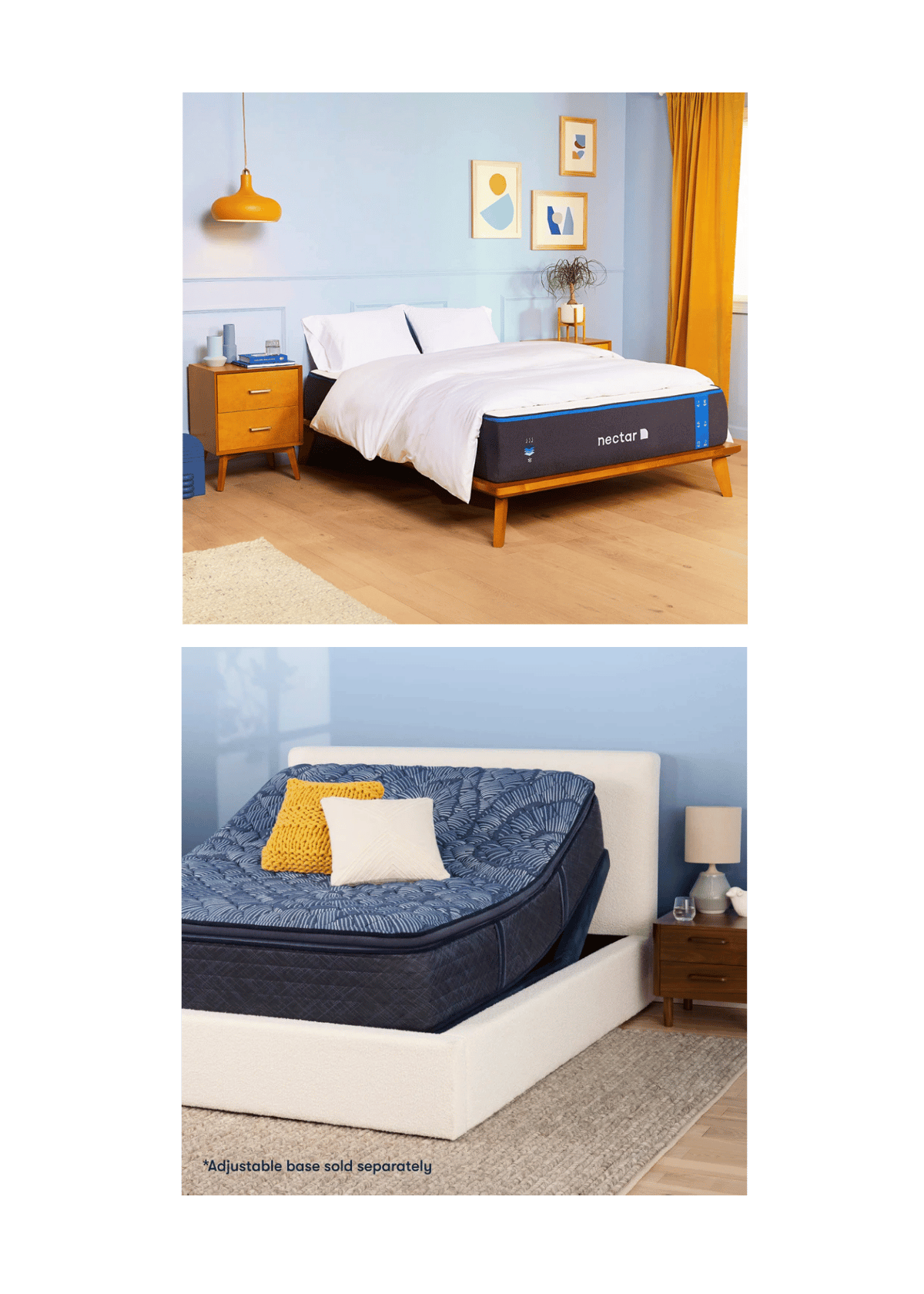(Last Update: 12/03/2024)
Every parent has been there—it's the middle of the night, and you pull back the sheets only to discover a fresh urine stain on the mattress.
As parents, our challenges certainly include these unexpected surprises. It is essential to act quickly to remove urine before it sets in.
In this guide, I will share expert tips on quickly handling pee accidents and ensuring your child's bed remains a haven.
It's not just about the urine stain but the potential lingering odors and bacteria.
Understanding the Urine stains marred the kid's mattress of Urine Stains
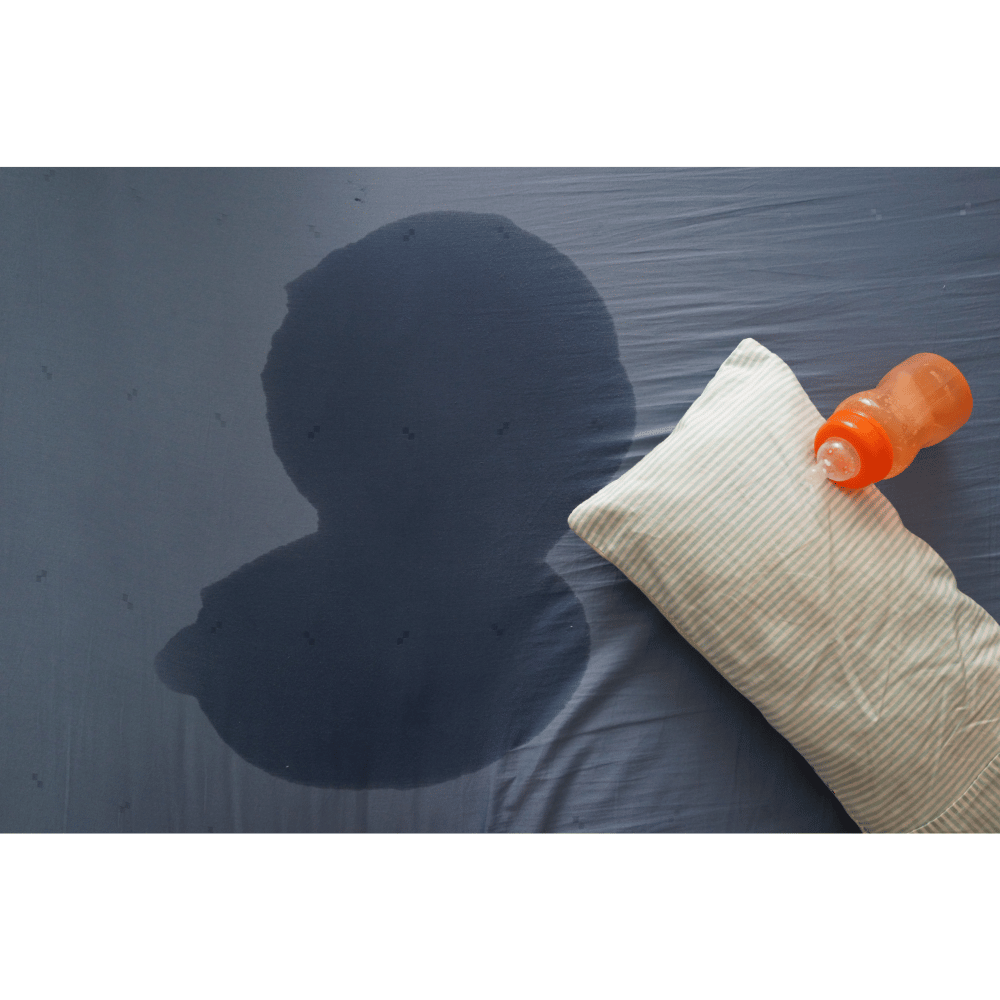
Components of Urine:
Removing urine from a mattress promptly ensures a hygienic sleep environment. Though mostly water, urine contains a complex mix of waste products expelled by our bodies. The yellow hue typically observed is from a pigment called urochrome. Apart from water, urine has dissolved salts, uric acid, urea, and creatinine.
Over time, urine proteins can break down and interact with the mattress material, leading to harder-to-remove old pee stains and a strong odor. Fresh urine stains can also harbor bacteria, making cleaning essential.
Why It’s Important to Remove Quickly:
You should be able to act quickly to get urine out before it sets deep. Immediate action on urine stains is crucial for several reasons. Firstly, the longer urine remains on a mattress, the deeper it penetrates, making it harder to extract.
This leads to persistent urine odors and increases the potential for bacterial growth. When a urine accident occurs on your mattress, blot excess urine with towels; for wet stains, use an enzyme cleaner that targets uric acid.
Popular Methods for Removing Pee Stains
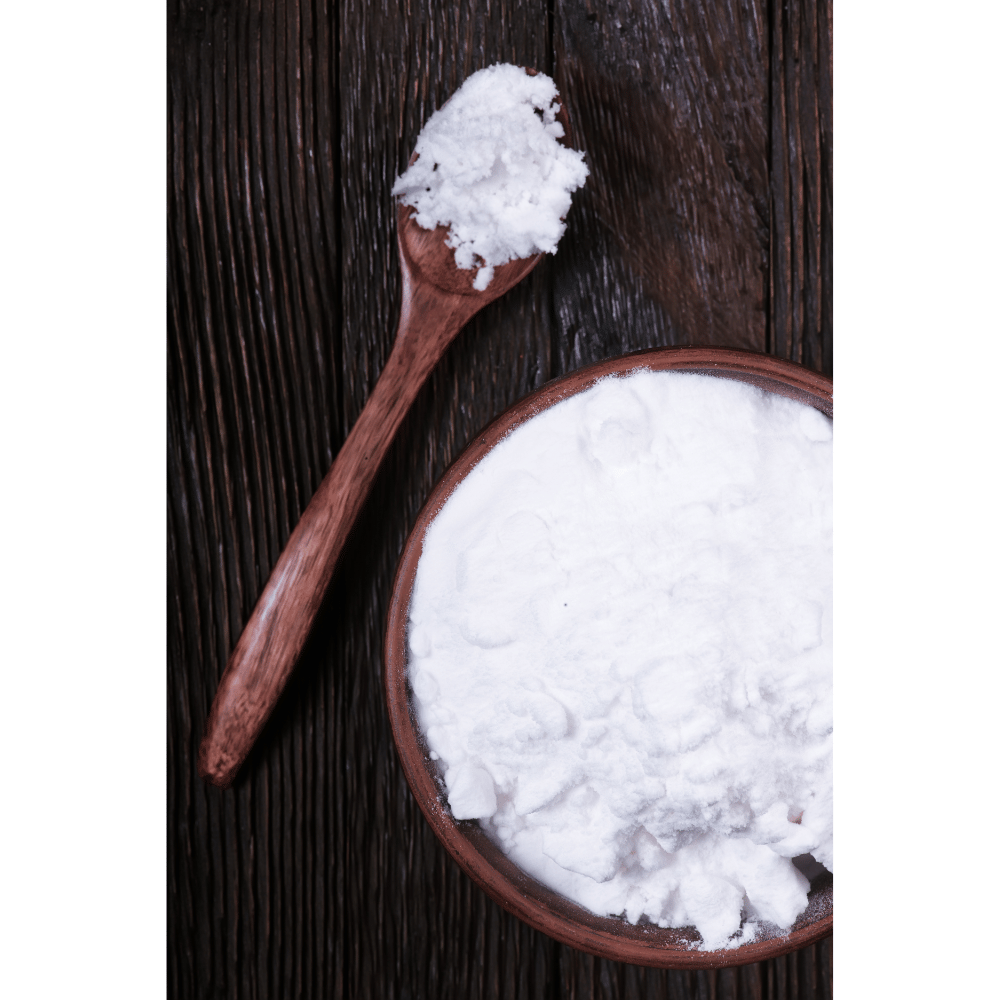
Baking Soda & Vinegar Mix
The Natural Power Duo
- First, blot the urine stain with paper towels to remove the urine smell from a memory foam mattress. Then, sprinkle baking soda on pee spots, including dog or cat pee, to neutralize uric acid.
- Baking soda and hydrogen peroxide have long been recognized as potent natural cleaning agents, and households have celebrated them for generations.
- The reputation they've acquired isn't merely based on popular word of mouth; it's rooted deeply in scientific understanding. Together, these components offer a powerful yet gentle solution to many cleaning challenges.
A hydrogen peroxide or vinegar solution can further dissolve stains. An enzyme cleaner can remove lingering scents. To protect the foam, always blot, not scrub.
Baking soda, also known as bicarbonate of soda, is not only a gentle abrasive but also a potent deodorizer. Despite its prowess in dismantling stains and combatting odors, baking soda stays white, highlighting its gentle nature.
To use this method: white vinegar and spray bottle
You can begin by blotting away as much urine as possible with clean urine, using paper towels for the best absorption.
- Prepare a white vinegar and water mixture in a spray bottle. Then, gently mist the stained zone with the solution.
- Let the solution permeate briefly before dabbing the area gently with a fresh cloth.
- When the vinegar mixture mostly evaporates, liberally sprinkle baking soda over the urine stain.
Suppose you just let the baking soda rest undisturbed for a prolonged period, preferably overnight. Its innate properties will extract lingering moisture and neutralize residual odors.
Vacuum up the baking soda thoroughly.
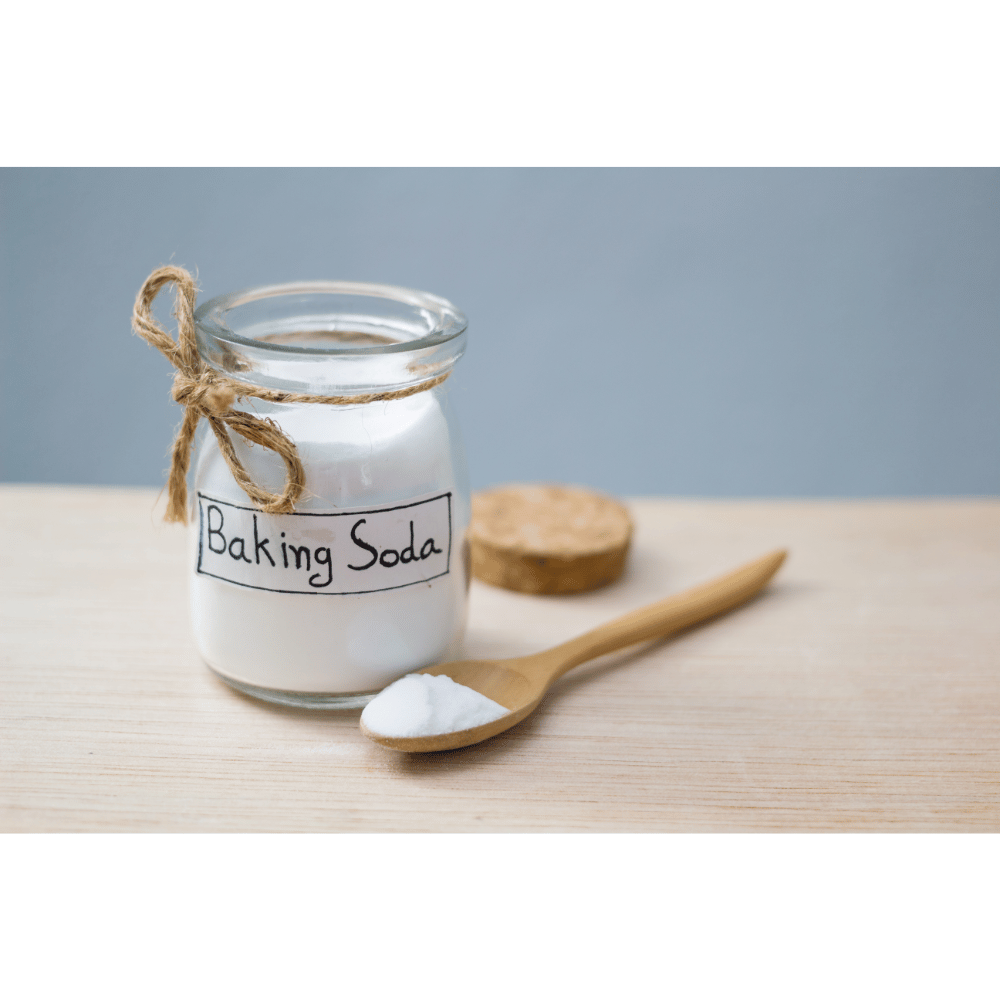
Benefits and Considerations
After a urine accident on a mattress, blot up the pee and apply baking soda to the stain. Let the baking soda sit to absorb the urine smell. For stubborn stains, use an enzymatic cleaner or stain remover. This method is eco-friendly and avoids harsh chemicals. However, ensure the baking soda layer is entirely vacuumed to avoid any remaining residue, which might make the mattress's surface gritty.
Commercial Cleaners
Specialized Solutions
Many commercial cleaners are available on the market designed to remove urine stains and odors. These products often contain enzymes that break down the proteins in urine, eliminating the urine stain and the smell. They can be particularly effective as they are formulated to target human urine's specific makeup.
To use this method:
- Read and follow the manufacturer's instructions carefully.
- Typically, you will spray or pour the solution onto the stain.
- Could you allow it to sit for the specified duration?
As I was asked to do, I just wanted to let you know, blot or vacuum.
Benefits and Considerations
Commercial cleaners can be highly effective and save time. However, choosing a product that is safe for mattresses and won't bleach or discolor the fabric is crucial. Always test on paper towels in a small, inconspicuous area first.
Hydrogen Peroxide Solution

Deep Cleaning and Disinfecting
Among the myriad cleaning agents available, hydrogen peroxide stands out for its exceptional stain-removing and disinfecting capabilities. It is particularly effective against pesky urine stains, breaking down the stain and having the intrinsic ability to whiten mattress fabric.
To harness its full potential:
- Prepare a blend comprising equal parts of hydrogen peroxide and water.
- To bolster its cleaning prowess, integrate a pinch of baking soda and a droplet of soap into the concoction.
- Administer the prepared solution onto the stain using a cloth or spray bottle.
- Let the solution work its magic for approximately 30 minutes.
- Conclude by blotting the area dry using a pristine cloth.
Benefits and Considerations
- While hydrogen peroxide emerges as a formidable ally against tenacious stains, users should tread cautiously.
- Its potent oxidizing nature means it has the potential to bleach certain fabrics.
- So, doing a preliminary spot test is always prudent, ensuring the solution doesn't inadvertently exacerbate the stain or discolor the fabric.
- With due diligence, hydrogen peroxide can be a mattress's best friend in times of unsightly accidents.
Dish Soap & Water
Gentle Yet Effective
Dish soap is designed to break down and lift away grease and other organic materials, making it surprisingly effective on urine stains. Combined with water, it creates a mild solution that can tackle and remove urine stains without overly harsh on your mattress.
To use this method:
- Mix a few drops of soap with cold water.
- Dampen a cloth with the solution and blot the stained area with a dry cloth.
- Continue blotting until the stain is lifted.
- Rinse the area with cold water using another clean cloth, then blot dry.
Benefits and Considerations
Soap and water are gentle cleaning methods suitable for all mattress types. This is a good starting point if you need more clarification about using stronger cleaning agents. However, please make sure the mattress dries thoroughly to avoid mold or mildew growth.
Each cleaning method also offers a unique approach to tackling the pesky problem of removing urine stains yourself. The key is to act quickly, use the right cleaning agents, and ensure your mattress dries thoroughly after cleaning.
Natural Solutions for Pee Removal
Lemon & Salt Paste
Nature's Powerful Bleach
Using natural solutions can effectively remove urine stains and odors from bedding. Lemon juice, with its natural bleaching properties, combined with the abrasive nature of salt, can effectively treat urine stains. The citric acid in lemon breaks down the stain and leaves a pleasant, refreshing scent.
To use this method:
- Mix equal parts of fresh lemon juice and salt to create a paste.
- Please apply this paste directly onto the stain, ensuring it covers the affected area.
- Let it sit for 15-20 minutes.
Please wipe off excess liquid with a damp cloth and allow the mattress to dry.
Baking soda is incredibly efficient at removing urine from mattresses. It absorbs moisture, neutralizes acidic urine odors, and gently lifts old stains. Baking soda remains white, ensuring visible cleanliness. Adding citrus-scented essential oil enhances baking soda's deodorizing power, leaving the mattress fresh, stain-free, and pleasantly scented.
Essential Oils
Harnessing Therapeutic Aromas
Essential oils offer a delightful fragrance and possess powerful antimicrobial properties. Oils like tea tree, eucalyptus, and lavender are particularly known for their disinfecting and odor-neutralizing capabilities.
To use this method:
- Mix a few drops of essential oil with water in a spray bottle.
- After cleaning the urine stain using the above methods, lightly mist the affected area with the essential oil cleaning solution. A good homemade cleaning solution efficiently removes pee from a mattress by breaking down stains, neutralizing odors, and ensuring freshness. It’s cost-effective, customizable, and safe for mattresses.
- Allow it to air dry.
Benefits and Considerations
Essential oils provide a dual benefit of stain treatment and a refreshing scent, ensuring a pleasant sleeping environment.
They're natural and free from harsh chemicals. However, some people may be sensitive to certain oils, so it's advisable to choose non-irritating and ensure the mattress is well-ventilated during drying.
These natural solutions prioritize eco-friendliness and efficiency. When dealing with urine stains, it's reassuring that nature provides tools to restore freshness and hygiene to our sleeping spaces.
Dealing with Odor After Cleaning
Best Products for Neutralizing Pee Smell
Odor Eliminators to the Rescue
- To remove urine stains, especially pet pee stains, use laundry detergent or an enzymatic cleaner.
- Blot gently, ensuring the urine is lifted without spreading the stain. Even after a stain has been removed, the stubborn smell of urine can linger, making sleep or relaxation near impossible.
- Various commercial products have been designed to combat and neutralize these unwanted odors.
Some popular options include enzyme cleaners, activated charcoal sachets, and specialized mattress sprays. The enzyme cleaners break down the proteins that cause the smell, while activated charcoal sachets absorb and neutralize the odor.
To use commercial products:
1. Follow the manufacturer’s instructions carefully.
2. Ensure the mattress is well-aerated during and after the process.
3. Periodically check the effectiveness and reapply if necessary.
Benefits and Considerations
Commercial products are formulated for effectiveness and often provide faster results than homemade solutions. When selecting a product, it's essential to ensure it's safe for mattresses and doesn't contain compounds that might irritate the skin or respiratory system.
Homemade Solutions
DIY Odor Busters and Urine Smell
To get urine out effectively, it's vital to blot, not scrub, the affected area. Sprinkle baking soda to neutralize the pee smell for urine accidents on mattresses. Indeed, among the pantheon of effective agents are baking soda, white vinegar, and the aromatic world of essential oils.
Baking Soda:
- Renowned as a natural odor magnet, baking soda offers a simple yet effective cleaning solution to the vinegar smell.
- Once you've examined the stain, you will see a great deal of dust and baking soda on the affected patch, so allow it to sit overnight.
- As dawn breaks, vacuum away the residue and, with it, the lingering smells.
White Vinegar:
- Another stronger urine odor-neutralizing elixir is a blend of equal white vinegar and water in a spray bottle.
- Mist over the targeted area, ensuring it's dampened but not drenched. The vinegar's characteristic pungency evaporates as the solution air-dries, pulling the urine odor along in its wake.
Essential Oils:
- For an aromatic finish, spray a few droplets of fragrant essential oil, such as lavender, with water.
- Post-cleaning, a gentle spritz combats residual odors and shrouds the area in a refreshing bouquet.
Preventive Measures for Future Accidents
Waterproof Mattress Protectors
Your Mattress’s First Line of Defense
A waterproof mattress protector is essential for every bed, especially if you have young children or pets. These protectors are designed to fit over your mattress like a fitted sheet and act as a barrier against moisture, spills, and accidents.
The waterproof layer ensures no liquid penetrates the foam mattress, keeping it dry and stain-free. Blot the spot and add baking soda to eliminate the urine smell from a memory foam mattress.
To use effectively:
Choose a protector that fits your mattress size correctly.
Ensure it's made of breathable material to prevent overheating during sleep.
Regularly wash and maintain the protector according to the manufacturer’s instructions.
Benefits and Considerations
Always consider a waterproof mattress cover for future protection. A waterproof mattress protector guards against urine and other potential spills or accidents, extending the life of your mattress. While they add an extra layer to your bed, modern protectors are designed to be thin and breathable, ensuring comfort isn't compromised.
Training & Encouragement for Kids
Building Confidence and Independence
Accidents happen, especially during the challenging phase of potty training. However, with patience, encouragement, and the right strategies, the frequency of these accidents can be minimized.
Consistent Routine: Establish a consistent bedtime routine that includes bathroom breaks. Encouraging your child to use the bathroom right before sleep can reduce nighttime accidents.
Open Communication: Talk to your child about staying dry and praising them for nights when they do. Making them a part of the process and celebrating small successes can boost their confidence.
Accessible Bathrooms: Ensure the path to the bathroom is clear and children can easily access it at night. Consider night lights to guide their way.
Benefits and Considerations
- Training and encouraging kids can reduce the frequency of nighttime accidents and help them develop a sense of responsibility.
- Celebrate successes, but remember to handle accidents with patience and understanding. Pressurizing or scolding can have counterproductive effects and may lead to anxiety around bedtime.
- Prevention is always better than cure. By taking proactive measures, such as investing in protective bedding and fostering positive training routines for kids, you can minimize the impact of future accidents.
- These strategies protect your mattress, ensure its longevity, and create a stress-free environment for parents and children.
Expert Advice on Maintaining Mattress Health
Routine Cleaning Tips
Essential Habits for Mattress Longevity
A clean mattress looks and smells better and offers a healthier sleeping environment by reducing allergens, dust mites, and other potential irritants. Incorporate the following cleaning habits into your routine to ensure your mattress stays in optimal condition:
Regular Vacuuming: Vacuum your mattress using the upholstery attachment on your vacuum cleaner at least once a month. This removes dust, dead skin cells, and potential allergens.
Spot Cleaning: If you notice any spots or stains, please address them immediately. Depending on the type of stain, use a mild liquid detergent and water or any of the cleaning methods mentioned previously.
Benefits and Considerations
Regular maintenance ensures a longer lifespan for your mattress and a more hygienic sleep environment. While cleaning, always avoid over-wetting the bottom mattress pads, as excess moisture can lead to mold and mildew growth.
When to Consider Replacing Your Mattress
Understanding Your Mattress’s Lifespan
- While proper care can extend the life of your mattress, every mattress has an expiration date. Recognizing when to replace your mattress is crucial for ensuring quality sleep.
- Visible Damage: Look for obvious signs like sagging, lumps, or springs poking out. These indicate that the mattress has lost its structural integrity.
- Constant Discomfort: An unsupportive mattress might be to blame if you frequently wake up with aches and pains absent when you go to bed.
- Allergy Symptoms: Older mattresses can harbor allergens, dust mites, and mold, increasing allergy symptoms.
- It's Old: Most mattresses have a 7-10-year lifespan. If yours is pushing a decade (or has surpassed it), it might be time for a replacement.
Benefits and Considerations
- Investing in a new mattress can improve sleep quality, reduce aches and pains, and minimize health risks associated with old, worn-out mattresses.
- When shopping for a new mattress, consider your sleep habits, preferred firmness level, and any specific needs or concerns (like back pain or allergies).
Maintaining mattress health is essential for its longevity and the well-being of those sleeping on it. Adopting a proactive cleaning routine and understanding when it's time for a replacement can ensure restful, healthy, and comfortable nights for years.
How to Get Pee Out of a Mattress: Avoiding Common Mistakes Parents Make
Scrubbing Vigorously
Mistake Explored:
When confronted with a new, alarming stain like urine, many parents scrub the tarnished spot fervently. This reflex, however, can exacerbate the situation.
Forceful scrubbing can embed the stain deeper into the mattress's fibers, complicating its removal. Moreover, such aggressive action risks harming the mattress's fabric and underlying materials.
Solution:
The key is gentleness. Rather than resorting to forceful scrubbing, adopt a blotting technique. Using a clean, absorbent cloth or paper towel, gently dab the stain, commencing from its periphery and gradually moving inward.
This strategy prevents the stain from expanding. This delicate approach effectively removes substantial moisture, ensuring the stain is managed without further complications.
Using Bleach or Harsh Chemicals
Mistake Explored:
Given the urgency of removing a stain and ensuring the bed's hygiene, parents might resort to strong cleaning agents like bleach.
While bleach effectively kills germs, it's too harsh for most mattress materials. Using it can discolor the mattress, weaken its fibers, and leave a strong, unpleasant odor behind. Moreover, such toxic chemicals' residues can harm children's delicate skin and respiratory systems.
Solution:
Opt for milder, natural cleaning solutions. White vinegar, for instance, is a gentle disinfectant and deodorizer. Baking soda can help lift stains and neutralize odors. For deep stains, you can use hydrogen peroxide or a vinegar solution. Enzymatic cleaners are highly beneficial when you need to clean urine spots or get pee out of fabric. They tackle pet and human urine effectively, reducing lingering scents and ensuring a clean sleep environment.
You can spot-test any cleaning solution in an inconspicuous mattress area before applying it more broadly. The balance ensures that the immediate issue is addressed without causing further damage or exposing the child to harmful or toxic chemicals again.
Conclusion:
Ensuring a healthy sleeping environment for your kids is paramount for their growth and well-being.
A clean mattress free from stains and odors provides comfort and keeps potential allergens and irritants at bay.
As you navigate the inevitable challenges of childhood accidents, I hope I have shown you that patience and preparedness can make all the difference.
I suggest using hydrogen peroxide and enzymatic cleaners to remove urine from mattresses and neutralize lingering scents.
Remember, a proactive approach today can pave the way for countless peaceful nights.
FAQs: Pee Stains and Mattress Care
How often should I clean my child's mattress?
Ideally, it would best to vacuum your child's mattress once a month to remove dust and potential allergens. Spot cleaning should be done as needed when there are visible stains or spills. Aim for deep cleaning every six months or as situations (like frequent bedwetting) dictate.
Should I use bleach on mattress stains?
No, using bleach on mattress stains is not advisable. While bleach is effective at disinfecting, it's too harsh for most mattress materials, can cause discoloration, and may leave a strong odor. It's also potentially harmful if residues remain in areas where children sleep.
Can I use regular liquid laundry detergent for stains?
While mild laundry detergent can be effective for some stains, use it sparingly and dilute it appropriately. Always rinse the area thoroughly to prevent any liquid detergent residue. Spot-testing detergent in a hidden mattress area is crucial to check for adverse reactions.
How long does it take for a mattress to dry?
The drying time for a mattress depends on the extent of the moisture and the ventilation of the room. Generally, it can take anywhere from a few hours to 24 hours. Use fans, open windows, or a hairdryer in a cool setting for faster drying. Please ensure the mattress is completely dry before putting the sheets back on to prevent mold growth.
How to Get Dog or Cat Pee Out of a Mattress?
The method for removing pet urine is similar to that for human urine. First, blot up as much urine as possible with an absorbent cloth. Then, use a white vinegar and water mixture or an enzymatic pet urine cleaner to break down the stain and neutralize the odor.
To combat the urine smell from accidents, especially dog pee, sprinkle baking soda on the stain and let it sit. After treating the area, sprinkle with baking soda to remove any lingering smells, allowing it to sit for a few hours before vacuuming it off.
